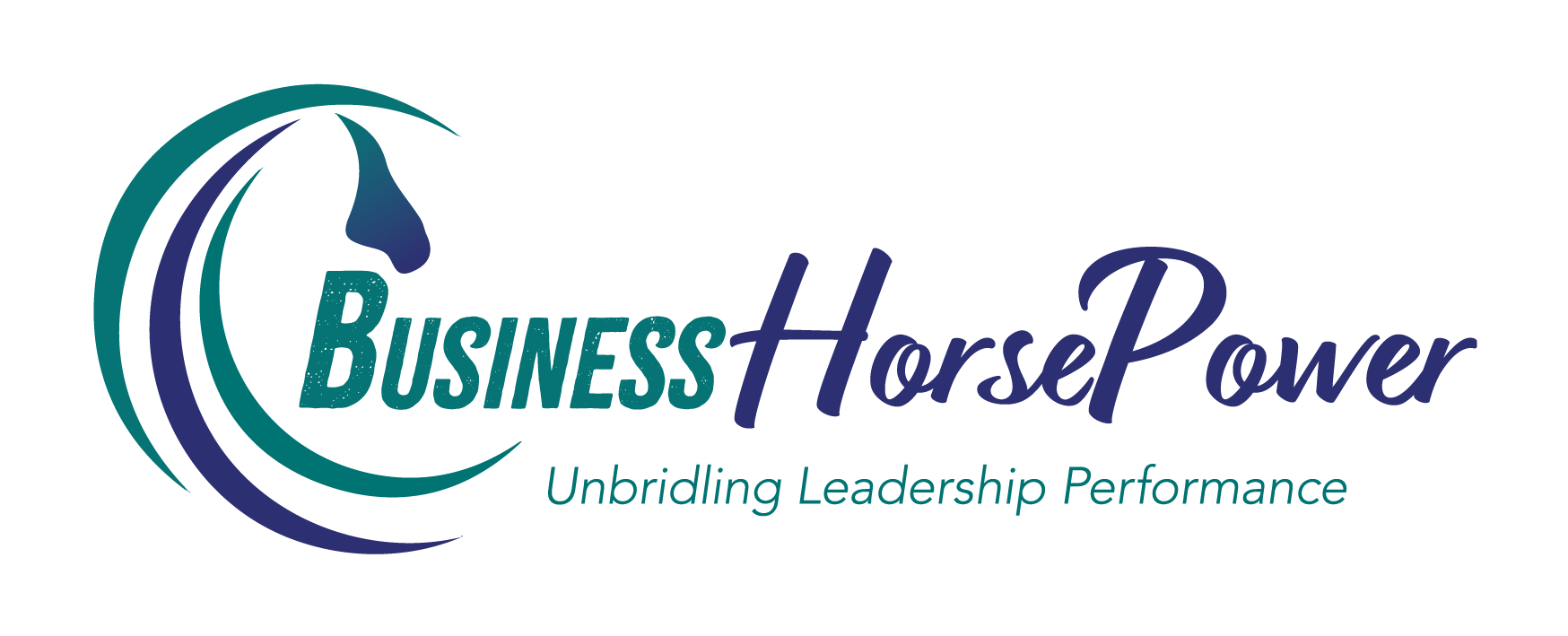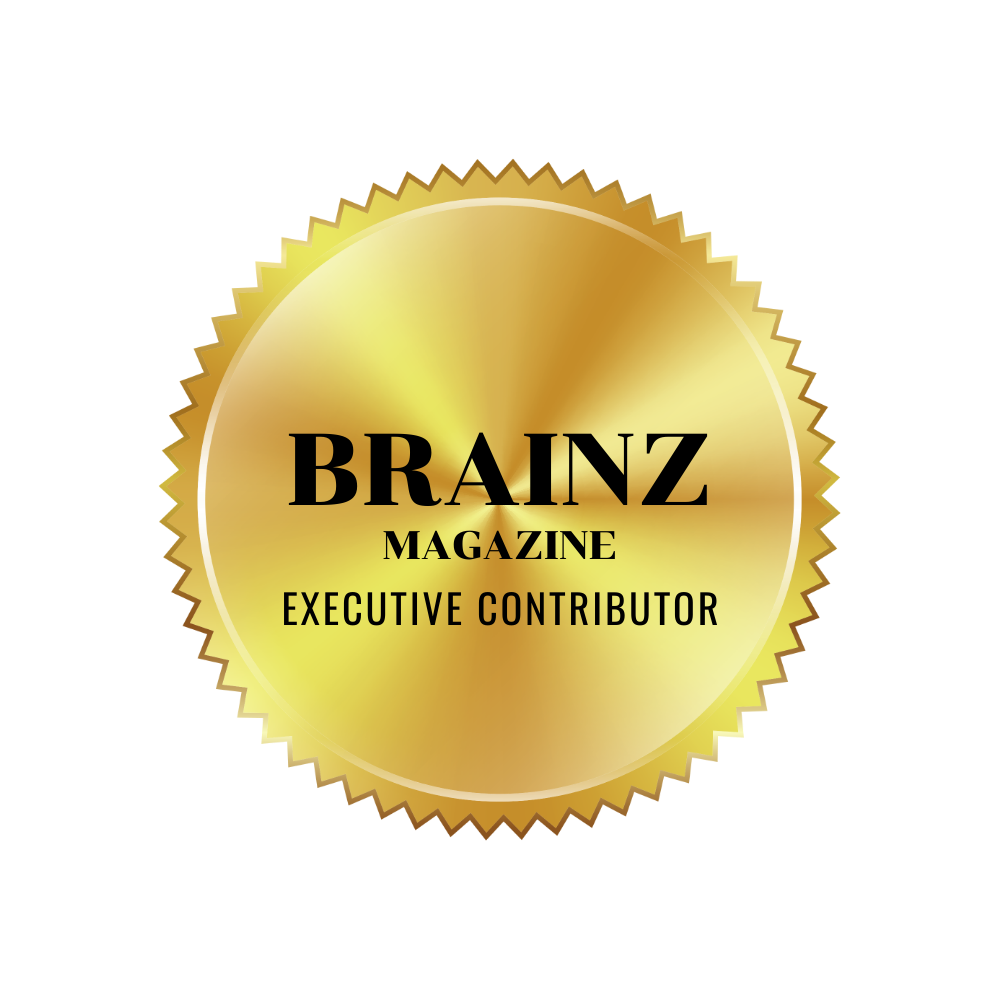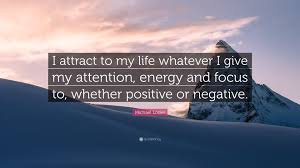
by Julia Felton | Oct 11, 2020
With so much going on in our lives how do we get anything done, and prioritise what needs to be accomplished. In this article I look at the key components that help ensure an idea moves from just that, an idea into action. These are the exact same techniques that I used to help me get my lovely ponies Bracken and Thistle under saddle.
“Daily routines, superficial behaviours, poorly prioritized or unfocused tasks leech managers’ capacities—making unproductive busyness perhaps the most critical behavioural problem” in business today, contend Heike Bruch and Sumantra Ghoshal in their book A Bias for Action.
For so many of us—whether CEOs for major corporations, small business owners or solo-entrepreneurs—there is a fundamental disconnection between knowing what should be done and actually doing it. Calling this disconnection the “knowing-doing gap,” Stanford University researchers Jeffrey Pfeffer and Robert Sutton pose the question: “Why does knowledge of what needs to be done frequently fail to result in action or behaviour consistent with that knowledge?”
Is there anyone in business today who hasn’t wondered the same thing?
The answer, argue Bruch and Ghoshal, is both simple and profound. They sum it up with the term “willpower.” The problem they say is not that managers’ time is sliced, but that their intention or “volition” is sliced as well.
Getting things done requires two critical components: energy and focus.And both are at risk in the modern workplace. Building a bias for action in yourself and your organization requires developing and reinforcing the skills to become a “purposeful” or “volitional” manager. These are people who can consistently achieve their objectives by making an unconditional commitment to their goals and then leveraging the power of that intention to overcome the obstacles in their way, whether their own doubts or the bureaucracies within their organizations.
“Purposeful action-taking depends on engaging the power of the will,” according to Burch and Ghoshal. “Not only does willpower galvanize your mental and emotional energy, it also enables you to make your intention happen against the most powerful odds: distractions, temptations to move in a different direction, self-doubt, and negativity. Willpower is the force that strengthens your energy and sharpens your focus throughout the action-taking process.”
Burch and Ghoshal identify four key steps that form the basis of successfully taking action:
Form your intention. To work, your goal must appeal to you emotionally and be something you can define concretely enough so you can clearly visualize its success.
Commit unconditionally to your intention. This is the key step, which the authors liken to “crossing the Rubicon,” Caesar’s irreversible decision that led to his conquest of Rome.
Protect your intention. Once you have made your commitment, you have to protect it from forces both within yourself and your organization.
Disengage from your intention. Unlike Caesar, your Rubicons aren’t life-and-death affairs. You have to define your “stopping rules,” the point of success—or failure—from which you walk away and take up the next challenge.
From the commitment comes both the emotional energy and the focus that are critical to your success. In short, the process of getting things done in business is pretty much the same as in any other aspect of life: The only things that get done are those that you genuinely believe in, and believe will get done.
So just think about your day and how you can stay focused and set up for success. I’ve stopped taking calls when I’m focusing on a specific task and it is incredible how much more I get done. It tests me as just whilst writing this article a client called me. At first I wanted to take the call but then realised how my lack of focus in that moment would not be serving anyone. So I “missed” the call and will call them back once I’m finished.
How can you stay focused on the in hand and not get distracted by all the other activities happening around you? I’d love to hear how you cope.
Julia Felton (aka The Business Wrangler) is the founder of Business HorsePower. Business leaders, entrepreneurs and executives hire her to accelerate their business performance by harnessing the energy of their people to work more collaboratively together. By aligning purpose with actions the team achieves exponential results as everyone starts pulling in the same direction.
Julia believes that business is a force for good and through designing purpose-driven businesses that leverage the laws of nature, and the herd, you can create businesses founded on the principles of connection, collaboration and community that make a significant impact in the world.

by Julia Felton | Apr 6, 2016
This week I began an 11 day Fat Loss Challenge with one of my former mentors John Assaraf. I love his work about the neuro-science of business and how the brain impacts our success. The great news is that you can re-programme your brain through a series of entrainment exercises and that is what I am doing with my eating patterns.
I met and then mentored with John back in 2009 when I was living in California and his programme “Having It All” was amazing and transformed my life. I’ll always remember his wise words about how to change anything in your life when he said “Inch By Inch It’s a Cinch”.
You see often when we seek to change habits or achieve goals we often think we have to do it all right now. We have become such an instant gratification society that we have begun to fail to appreciate all the small things around us. And yet it is all those small actions that ultimately help us achieve our goals and dreams.
It is dogged determination and persistence day in day out that effects change. It is the daily decisions that I make about exercise and chocolate that will affect how successful I am on this Fat Loss Challenge, after all I know I can’t lose 6kg overnight!!!
As well as consistent action the other thing to do when setting goals is to make sure they inspire you. John bans the word “diet” as that implies lack and none of us want that. The language we use is so important in helping help us stay motivated and focused, so rather than losing weight John talks about releasing weight. There is something in the language that makes me feel that I am making the choice to do this rather than being forced.
So what small action will you take today to move you towards your goals and dreams – maybe it is reaching out to client, having a courageous conversation with your boss or spouse or in my case exercising and making the choice to eat healthier food.
Julia Felton (aka The Business Wrangler) is the founder of Business HorsePower. Business leaders, entrepreneurs and executives hire her to accelerate their business performance by harnessing the energy of their people to work more collaboratively together. By aligning purpose with actions the team achieves exponential results as everyone starts pulling in the same direction.
Julia believes that business is a force for good and through designing purpose-driven businesses that leverage the laws of nature, and the herd, you can create businesses founded on the principles of connection, collaboration and community that make a significant impact in the world.

by Julia Felton | Aug 4, 2015
“Values are not what we want, but something intrinsic which you absolutely need in your life in order to be true to yourself.” – Cherry Claus
The term authentic leadership has been around for a while and a key starting point for any leader to be truly authentic is to know what your values are. Our values are in essence our internal compass or GPS and give us clues to our internal standards and measures. They are what we hold dear and are what’s important to us and are therefore pivotal in what motivates us. Yet so many people are unconscious of their values.
When we are clear about our values we can make decisions more clearly and often faster, understand what motivates us and when we are being true to our values we will be more energised.
So what is a value?
Think of your values as a GPS – when you wander off the path or lose direction, they bring you back on track. Values are something we naturally move towards or away from, they are the things we are willing to spend energy on. They are largely unconscious and drive your true purpose. They provide the push, or motivation to take action and serve as an evaluation criteria, or judgement about our actions. They are the way we judge good or bad, right and wrong, appropriateness or inappropriateness.
When you are fully clear on your values, you attract to yourself people of like mind who share the same desire to lead a purposeful, authentic life.
- Our values or perhaps the ‘personal rules’ which we choose to live by, influence our emotions and behaviours, and have an enormous impact on what we do and what we say.
- Values are the supporting framework for our beliefs and are strongly connected to our identity.
- Our primary principles and way of life are controlled by our values.
- They furnish us with direction and motivation to accomplish tasks or challenge situations.
- Our values impact every angle of our lives and the lives of those we interact with.
- Values are what give meaning to our lives.
- Values are closely linked to our vision, of what’s possible, or what we can become.
- Values stimulate our vision of what we want.
We organise our values hierarchically, so those higher up the hierarchy we search for first in terms of decision-making, evaluating etc. Once the higher values have been satisfied those lower down the hierarchy are then satisfied. It’s not automatic that once you have fulfilled the higher values those lower down are satisfied.
Values also determine our behaviour. Someone with a values hierarchy of adventure, family happiness, health, pleasure, and wisdom will handle a situation very differently from someone with a values hierarchy of order, loyalty, freedom, achievement and friendship.
How do I know when I’m not living my values?
If you are not living by your values you are likely to be unhappy, and if you don’t know what your values are you won’t be able to pinpoint exactly why you are not happy.
If someone violates one of your values you will also feel a degree of discomfort, hurt, annoyed or angry and it won’t always be obvious why you feel this way.
If you have set goals in the past which you firmly believed you were capable of achieving, and yet you haven’t achieved them, it’s very possible that the goals may have not been congruent with your values.
If you have not yet identified what your values are at work, what is important to you about the work you do, give me a call and I’ll start you on the journey to elicit your values.
Julia Felton (aka The Business Wrangler) is the founder of Business HorsePower. Business leaders, entrepreneurs and executives hire her to accelerate their business performance by harnessing the energy of their people to work more collaboratively together. By aligning purpose with actions the team achieves exponential results as everyone starts pulling in the same direction.
Julia believes that business is a force for good and through designing purpose-driven businesses that leverage the laws of nature, and the herd, you can create businesses founded on the principles of connection, collaboration and community that make a significant impact in the world.
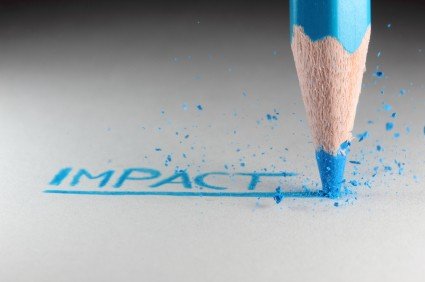
by Julia Felton | May 11, 2015
If leaders are to be successful they need to be able to influence and impact others. But what is impact and how is it created. My definition of personal impact is ‘The ability to command your audience, aligning your physiology and emotions to create the impact you intend.’ If you are able to do this it will automatically affect the tone of voice you use.
Why Physiology and Emotions?
In my workshops I often refer to the Mehrabian model on the impact of communication where 55% of what we communicate is through our physiology or our body language. This can be anything from facial expression, the way you stand or sit and breathing. It’s not about size, height or physical beauty. 38% of what we communicate is through tone of voice, which includes volume, timbre, speed, rhythm and the energy behind it.
Both tone and physiology are affected by our emotions. If you are fearful, happy, stressed it will show in both and people unconsciously read these. This leaves 7% of the impact in the words you use. It’s important to recognise that all 3 elements are significant and have to be aligned. Saying you are happy when your voice tone and body are clearly saying something different gives an incongruous message, as you are not being authentic and people immediacy recognise this. Admittedly sometimes this acknowledgement is not even conscious. When others experience us as inauthentic and incongruent it makes them wary of us as they are not sure what to expect and in a sales situation people will not buy from you.
So how do you create an impact?
The best way to create the impact you desire is firstly to be clear on what impact you want to create. This mean being authentic and having clarity on the outcome you want. Being laid back is great if that is the impact you want to create but this might not be the right approach if you want people to listen to your message and remember it.
Remember you create an impact from the moment you walk in a room or someone sees/hears you for the first time. Here are some simple steps you can begin to practice to create the impact you desire.
- Ask yourself – what is my intention in the meeting? What result do I want? What atmosphere do I want to create? Having got clarity on this;
- Ask yourself – how do I need to be to create/deliver this? What do I need to embody? Visualise how you will be walking into the room and interacting with others
- As you do this go through a basic centring practice:
- Stand with your feet hip width apart, balanced equally on each foot with your knees relaxed.
- Lift your rib cage slightly and relax your shoulders so you stand tall yet relaxed.
- Lift you head a look straight ahead, relaxing your jaw in the process.
- Now, if your breath hasn’t already shifted breath into your abdomen.
- Notice the shift in your body and your breath and the energy you need to create and project.
- If possible practice how you need to be.
Now, after the event reflect:
- Did you create the impact you wanted?
- If yes what did you learn that you can repeat or do more of?
- If not what did you notice about how you were? When did you ‘lose it?’
- What do you need to practice to do better next time?
- If possible get feedback.
In my experience the times I fail to make the impact I desired occur when I stop being authentic and try to be someone else. When I lack authenticity it becomes difficult to connect with the other person and communication channels become blurred. One of the best teachers I have ever come across when it comes to learning how to create an impact and be authentic are my horses. They never fail to give me honest feedback.
So if you are interested in developing your authentic communication skills I invite you to join me for the upcoming Art of Authentic Communication Workshop where my herd of horses will be your teachers.
Julia Felton (aka The Business Wrangler) is the founder of Business HorsePower. Business leaders, entrepreneurs and executives hire her to accelerate their business performance by harnessing the energy of their people to work more collaboratively together. By aligning purpose with actions the team achieves exponential results as everyone starts pulling in the same direction.
Julia believes that business is a force for good and through designing purpose-driven businesses that leverage the laws of nature, and the herd, you can create businesses founded on the principles of connection, collaboration and community that make a significant impact in the world.
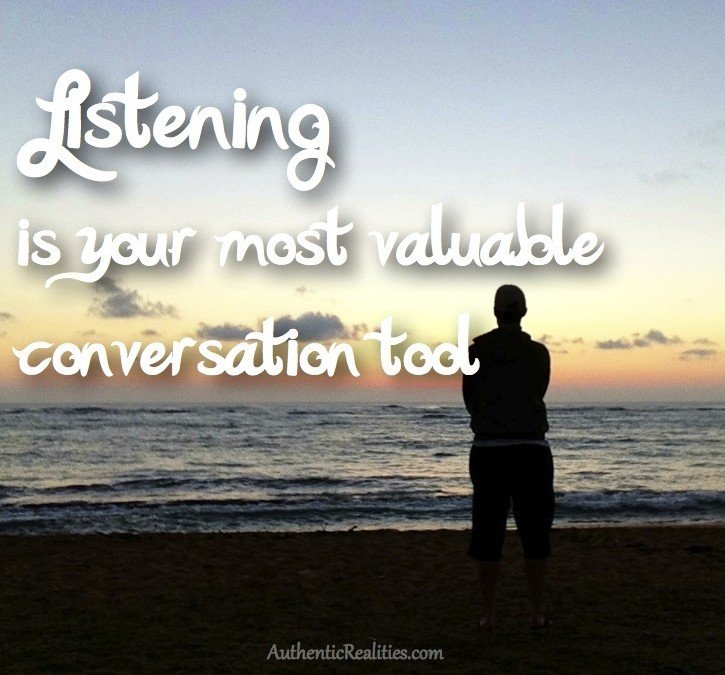
by Julia Felton | May 5, 2015
Our brains are hard-wired to do the opposite of listening unconditionally— listen for quick judgements. Our hunter-gatherer ancestors who could make quick determinations between the rustling of grass or a tiger survived. Those that wandered around, taking it all in, became lunch.
Our world today is different, and we are less likely to take creative risks or share with someone that we feel has passed judgement on us. According to Judith Glaser, author of Conversational Intelligence, the main purposes of listening are to judge, to reject or to connect. People determine if they are being judged or connected to in .07 seconds. How do you feel when you sense you’re being judged? How creative are you? Are you good at solving problems? Do you feel inspired? Thoughtful? Or do you want to find the safest answer as fast as you can in order to get out of the conversation?
If you listen unconditionally, that means that you are going into the conversation with the primary purpose of connecting, not deciding if you are going to accept or reject what the other person is talking about. Regardless of what the other says, you are coming from a place of curiosity. Nothing said will faze you. Next time you have a conversation, whether with a client, family member or coworker, rather than start with your thoughts, ask the other person for theirs. Continue to ask open-ended questions and just… listen. Do not analyze, do not plan, do not start making any choices. Then ask another open-ended question. If you’re stuck, one way to practice coming up with questions is using the click-down tool. Find the key word or phrase that would be blue and underlined if the conversation was transcribed on a webpage, and ask an open-ended question about it.
Listening unconditionally is not easy, but it is not impossible. In fact, the more you practice it the more natural it will become. So I challenge you. See how many conversations you can have in the next week where you only ask questions. You will find that you talk less and hear a lot more. In fact, you may even be inspired.
If you want to develop your listening skills then I invite you to join us at the Art of Authentic Communication Workshop being held as part of International Coaching Week.
Julia Felton (aka The Business Wrangler) is the founder of Business HorsePower. Business leaders, entrepreneurs and executives hire her to accelerate their business performance by harnessing the energy of their people to work more collaboratively together. By aligning purpose with actions the team achieves exponential results as everyone starts pulling in the same direction.
Julia believes that business is a force for good and through designing purpose-driven businesses that leverage the laws of nature, and the herd, you can create businesses founded on the principles of connection, collaboration and community that make a significant impact in the world.

by Julia Felton | Apr 28, 2015
Whilst good communication and leadership are all important, both in business and when working with horses, it is connection that forms the essential foundation of this triage. This is because if you can connect with others at all levels — one on one, in groups and with an audience — then relationships are stronger, your sense of community and belonging improves, your ability to create teamwork increases and your influence and productivity expands.
However, when people come to us with a problem, it’s easy to lapse into behaviours that — although usually well-meaning — serve to block us from hearing the other person’s experience, and so block the connection. We’d be better off following the words of this inside-out saying: “Don’t just do something; stand there”…and try not to:
- Counsel. Seek not to advise solutions (until asked) but listen and reflect back the person’s experience.
- Defend. When you explain, justify or rationalize, you invalidate the other’s experience. You can create a time to offer your experience, but for now, just listen.
- Shut down. This happens in parenting when we say things like: “Stop crying. It’s not that bad.” Children are more likely to stop crying when they feel they’ve been heard.
- One-up. Saying, “Oh, that’s nothing! Listen to what happened to me!” gives the message, “Your experience doesn’t count.”
- Reassure. It’s OK for people to feel their feelings. When we try to console (“It’s not your fault; you did the best you could…”), we take people out of their feelings.
- Pity. Sympathy and pity (“Oh, you poor thing!”) are very different from empathy, which is simply a respectful understanding of what others are experiencing.
- Commiserate. Sharing stories of your own similar experiences is not showing empathy; it turns the focus away from the person with the problem.
- Correct. First listen. After the other person feels fully understood, then see about correcting any misunderstandings or inaccurate impressions.
- Enlighten. Don’t attempt to educate unless your opinion is asked.
- Interrogate. Too many questions distract from the feelings at hand.
Learning to connect is one of the most important skills that we can learn, and it starts off by being genuinely interested in the other person and how they are feeling. Listen to what they are saying with your entire body, stay present and focused, be curious. If you exhibit all these skills then people are more likely to connect with you. Interestingly, these too are the skills required to connect with a horse which is why horses are the teachers on the upcoming Art of Authentic Communications workshop. You need to be able to communicate to connect.
The benefits of learning to communicate and connect are immense: better personal and family relationships, better business relationships and in general a better experience of life.
Julia Felton (aka The Business Wrangler) is the founder of Business HorsePower. Business leaders, entrepreneurs and executives hire her to accelerate their business performance by harnessing the energy of their people to work more collaboratively together. By aligning purpose with actions the team achieves exponential results as everyone starts pulling in the same direction.
Julia believes that business is a force for good and through designing purpose-driven businesses that leverage the laws of nature, and the herd, you can create businesses founded on the principles of connection, collaboration and community that make a significant impact in the world.
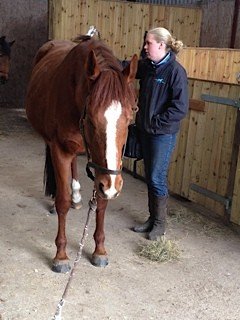
by Julia Felton | Jun 17, 2014
Coach Charlie has been excelling himself this week teaching some new clients the finer points of sales and marketing, particularly as it relates to energy. Julie won a Horse Assisted Coaching session with me as a raffle prize to raise money for the Harrogate Neo-Natal Unit. I was delighted to be able to support this organisation who have supported a number friends through their challenging times.
Julie selected Coach Charlie to work with during her session on over-coming her fears around selling. Making sales is a key activity for any business owner but one that many of my clients don’t relish. Charlie taught Julie the subtle art of selling – how to manage her energy, when to lead, when to follow, when to pause and how to keep him engaged.
You see the biggest challenge you have in business is not competition for your products and services but rather people’s apathy and inertia. Your potential clients have so much going on and are over-loaded with information that sometimes they stop engaging. (The average person gets 147 emails per day and I know I get a lot more than that). Your challenge like Julie’s is how to attract the attention of the client (in this case Charlie) and keep him engaged so that he wants to follow you.
At first Charlie just stood still rooted to the spot, unable to move. Julie did a great job of keeping his attention but her energy was not compelling enough to get him moving – and guess what, Julie shared that often happens in her business. Her prospects are interested in what she has to offer but like Charlie never take action and buy her services.
Charlie taught Julie how sometimes you need to be a little directive to get the first step, because this is always the hardest. Once the first step is taken however, then momentum can keep the horse (and your potential client) moving forward. When Julie raised her energy and gave Charlie some clear instruction he walked alongside her.
How many times have you not led your potential client through the sales conversation for fear of being too salesy? This is the lesson that Julie learnt in the round pen from Charlie – sometimes your clients need a gentle nudge to get them moving in the right direction. They need to be told what to do in order to take the first step and it needs to be easy to take. Set things up for success. So in Julie’s case getting Charlie to walk across the round-pen to join her was too much of a step but when she made that first step easy, by joining him and being much closer to him, he willing walked with her.
The horses have been teaching me so much about sales recently so I’m delighted to be a guest speaker on The Get Clients Fast tele-summit happening next month. Stay tuned for more details and how you can grab a copy of my hot off the press free report Attract And Convert Clients By Being A Trusted Sales Adviser.
Julia Felton (aka The Business Wrangler) is the founder of Business HorsePower. Business leaders, entrepreneurs and executives hire her to accelerate their business performance by harnessing the energy of their people to work more collaboratively together. By aligning purpose with actions the team achieves exponential results as everyone starts pulling in the same direction.
Julia believes that business is a force for good and through designing purpose-driven businesses that leverage the laws of nature, and the herd, you can create businesses founded on the principles of connection, collaboration and community that make a significant impact in the world.
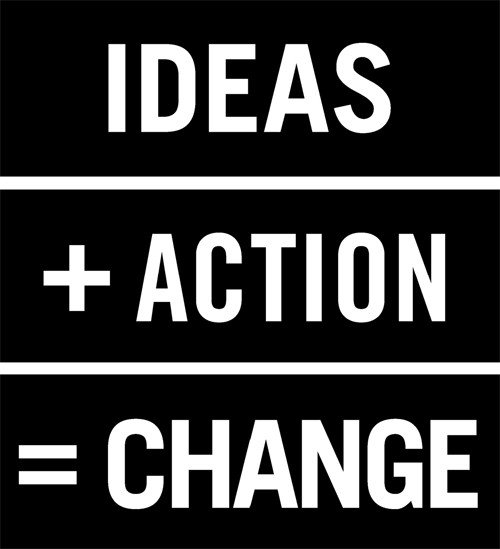
by Julia Felton | Sep 17, 2013
With our constant stream of emails, voicemails, meetings, conference calls, pages, faxes and so on, it is a minor miracle that any of us can accomplish anything. With our Blackberrys surgically implanted into our hands, our time is sliced so thinly that we never have the focused time to develop the big-picture perspective required for an action plan, let alone the time to execute it.
“Daily routines, superficial behaviours, poorly prioritized or unfocused tasks leech managers’ capacities—making unproductive busyness perhaps the most critical behavioural problem” in business today, contend Heike Bruch and Sumantra Ghoshal in their book A Bias for Action.
For so many of us—whether CEOs for major corporations, small business owners or solo-entrepreneurs—there is a fundamental disconnection between knowing what should be done and actually doing it. Calling this disconnection the “knowing-doing gap,” Stanford University researchers Jeffrey Pfeffer and Robert Sutton pose the question: “Why does knowledge of what needs to be done frequently fail to result in action or behavior consistent with that knowledge?”
Is there anyone in business today who hasn’t wondered the same thing?
The answer, argue Bruch and Ghoshal, is both simple and profound. They sum it up with the term “willpower.” The problem they say is not that managers’ time is sliced, but that their intention or “volition” is sliced as well.
Getting things done requires two critical components: energy and focus. And both are at risk in the modern workplace. Building a bias for action in yourself and your organization requires developing and reinforcing the skills to become a “purposeful” or “volitional” manager. These are people who can consistently achieve their objectives by making an unconditional commitment to their goals and then leveraging the power of that intention to overcome the obstacles in their way, whether their own doubts or the bureaucracies within their organizations.
“Purposeful action-taking depends on engaging the power of the will,” according to Burch and Ghoshal. “Not only does willpower galvanize your mental and emotional energy, it also enables you to make your intention happen against the most powerful odds: distractions, temptations to move in a different direction, self-doubt, and negativity. Willpower is the force that strengthens your energy and sharpens your focus throughout the action-taking process.”
Burch and Ghoshal identify four key steps that form the basis of successfully taking action:
Form your intention. To work, your goal must appeal to you emotionally and be something you can define concretely enough so you can clearly visualize its success.
Commit unconditionally to your intention. This is the key step, which the authors liken to “crossing the Rubicon,” Caesar’s irreversible decision that led to his conquest of Rome.
Protect your intention. Once you have made your commitment, you have to protect it from forces both within yourself and your organization.
Disengage from your intention. Unlike Caesar, your Rubicons aren’t life-and-death affairs. You have to define your “stopping rules,” the point of success—or failure—from which you walk away and take up the next challenge.
From the commitment comes both the emotional energy and the focus that are critical to your success. In short, the process of getting things done in business is pretty much the same as in any other aspect of life: The only things that get done are those that you genuinely believe in, and believe will get done.
Julia Felton (aka The Business Wrangler) is the founder of Business HorsePower. Business leaders, entrepreneurs and executives hire her to accelerate their business performance by harnessing the energy of their people to work more collaboratively together. By aligning purpose with actions the team achieves exponential results as everyone starts pulling in the same direction.
Julia believes that business is a force for good and through designing purpose-driven businesses that leverage the laws of nature, and the herd, you can create businesses founded on the principles of connection, collaboration and community that make a significant impact in the world.
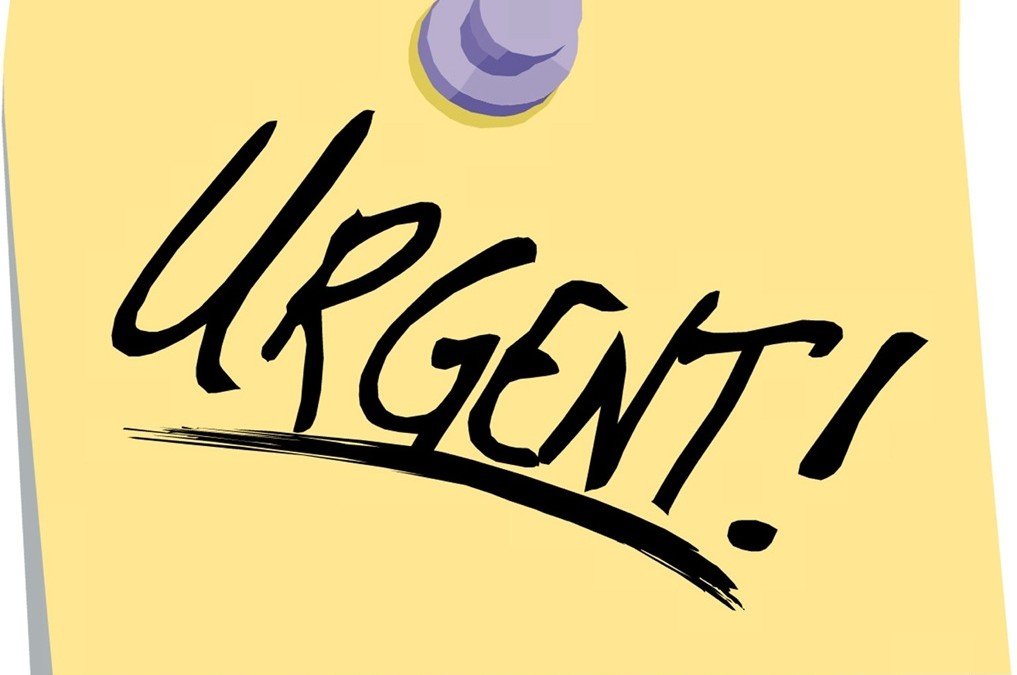
by Julia Felton | Jan 29, 2013
Unbridle Your Success and Lead Your Business
Much like my horses a business needs good leadership and yet time and time again I see business owners struggling and frustrated as their business starts leading them.
You know your business is leading you when you are feeling:
- Overwhelmed with making a decision on how or what to do to move forward
- Frustrated at how stressful your business has really become
- Reactive to the opportunities that surround you rather than pro-active
- Stuck in an income bracket that you seem unable to break through
- Believe that the next level of success is maybe just too far out of reach
- Feel unbalanced, unorganized and incapable of taking it to the next step
- And most of all, you know you are working for the worst boss ever – YOU
It’s time to Grab the Reins and take control of your business and your life and pro-actively decide what is happening.
The first step to enable you to lead your business from surviving to thriving is to get your own personal success game plan, one that aligns with your natural strengths with the universal energies and gets you playing the game you love whilst working with others that love and excel at the bits you hate.
Great leaders know that “Success is a team game” and you need to surround yourself with herd members that complement your strengths. So what game do you need to play to be successful and who do you need in your herd?
”If you are doing anything that feels like hard work, you are already doing the wrong thing”
Do you think successful people know their personal success game plan…? You bet they do!
I am committed to helping more people. like you, discover their personal success game plan that resonates with your natural strengths and leadership style. So for a limited time – until the 8th February, you can get your personal success game for just £97 and as an extra special bonus I will offer you a 30 mins 1:1 personal consultation to get you started.
That’s a massive 50% discount on the normal price. You can learn more here.
You will receive your 16 page personal success report that details your personal success game plan based on your natural gifts and talents. And during our 30 min consultation we will look at the strategies and activities that will most naturally and easily help you stay in flow so that you can achieve more success in 2013.
So don’t delay click the button below and complete the online success questionnaire and your personalised success game plan will be immediately emailed to you. Then once you have read the report email me and we will schedule in your personal 1:1 success consultation.
Don’t delay, this could be the best decision you ever make to help you discover your personal success game plan for 2013.
I look forward to working with you to make 2013 your best year ever.
Julia Felton (aka The Business Wrangler) is the founder of Business HorsePower. Business leaders, entrepreneurs and executives hire her to accelerate their business performance by harnessing the energy of their people to work more collaboratively together. By aligning purpose with actions the team achieves exponential results as everyone starts pulling in the same direction.
Julia believes that business is a force for good and through designing purpose-driven businesses that leverage the laws of nature, and the herd, you can create businesses founded on the principles of connection, collaboration and community that make a significant impact in the world.

by Julia Felton | Dec 5, 2012
“Intention is comprised of our passion or desire to manifest. Intention has energy, it has life.”
– Ariana Strozzi, Horse Sense for the Leader Within
When the seemingly relentless demands at work and burdens of a busy life take their toll on work performance, we tend to think that managing our time better will improve the situation. If we can just work faster, multi-task more efficiently, things will be better, we think, as we buy the latest time management gadget or software.
However, as Jim Loehr and Tony Schwartz, authors of The Power of Full Engagement, explain, it is the skillful management of energy, not time, that most significantly affects high performance. Too often, we squander this valuable resource through energy-taxing habits—physical, emotional, mental and spiritual habits. Take this Self-Quiz to see how well you are managing your energy.
1. I rely on sugary or carbohydrate-rich snacks for bursts of energy when I need an energetic pick-me-up.
2. Life is an endless marathon to be endured; you just have to keep on running.
3. I tend to do what feels immediately pressing and easier to accomplish rather than make intentional choices about how I spend my time and what matters most.
4. I hate routines; they’re too much like being stuck in a rut. I prefer to be loose and spontaneous.
5. I’m so busy I rarely have time to reflect on what I value most deeply.
6. I seem to be stuck in overdrive; I feel like I’ve lost the ability to shift to any other gear.
7. I work out (cardiovascular and weight training) irregularly, if at all.
8. I regularly get less than six hours of sleep.
9. I rarely take breaks; that way, I can get more done.
10. When I take the time to notice, my breathing seems shallow; I seem to go a long time without taking a deep breath.
11. Anxiety, frustration and overwhelm seem ever-present for me.
12. When I’m under pressure, I easily become harsh or defensive with others.
13. Personal relationships are not something I devote a lot of energy to. If they don’t work, I move on.
14. I smoke and/or drink; to be honest, doing so really helps lower my anxiety level.
15. It’s been a long time since I’ve done something purely because it was enjoyable or felt good.
16. Downtime is wasted time.
If you answered “true” to more than just a few of these statements, you’re probably not performing—or feeling—as well as you could be. If you would like to explore how to live in a way that enhances your energy, not depletes it, then you need to be in flow. Please don’t hesitate to contact me so that I can help you discover your own secret recipe for putting energy and flow into your life.
Julia Felton (aka The Business Wrangler) is the founder of Business HorsePower. Business leaders, entrepreneurs and executives hire her to accelerate their business performance by harnessing the energy of their people to work more collaboratively together. By aligning purpose with actions the team achieves exponential results as everyone starts pulling in the same direction.
Julia believes that business is a force for good and through designing purpose-driven businesses that leverage the laws of nature, and the herd, you can create businesses founded on the principles of connection, collaboration and community that make a significant impact in the world.


